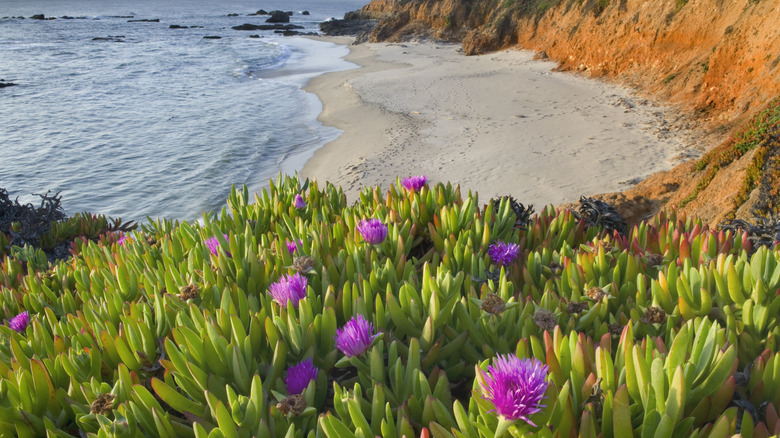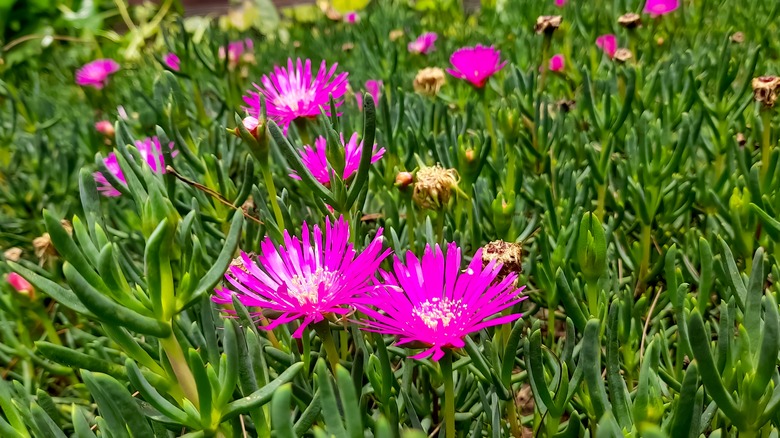Avoid The Invasive Ice Plant & Grow This Stunning Ground Cover Instead
If you live in California, beds of ice plant are so common you'd be forgiven for thinking it's a native species. In reality, ice plant (Carpobrutus edulis), a species widely grown throughout the state, actually hails from southern Africa, where the hot, dry coastal climate is very similar to coastal California. Because of its low maintenance needs, this succulent that blooms with dramatic purple flowers is an appealing ground cover choice. However, the non-native has become a fast-spreading invasive ground cover, crowding out native plants and increasing the risk of landslides by destabilizing soil. It also reproduces by both seed and stem fragments. A single plant can quickly colonize huge stretches of land, and clumps of clonal plants can spread to nearly 200 feet in diameter. When trying to remove it, leaving even a single stem fragment behind in the soil is all it takes for the aggressive grower to reestablish itself in that area.
If your heart is set on ice plant, there's some good news. Trailing ice plant (Delosperma cooperi) looks almost identical to Carpobrutus edulis, but is far less aggressive. Also native to southern Africa, it thrives in the same conditions as the invasive ice plant and gives you the same display of purple blooms all summer long. Just double check the scientific name on the plant label before buying. Since both plants are often sold under similar common names, you want to make sure you really are getting the less aggressive Delosperma cooperi.
Growing trailing ice plant as a ground cover
Trailing ice plant might look almost identical to its invasive counterpart, but it's much better behaved. A single plant will only spread to about 18 inches in diameter, making it much easier to keep it contained as a purple flowering groundcover that will add gorgeous color to your yard. To use as a groundcover, space plants about 16 to 24 inches apart in a sunny, dry area of your yard. Soon, you'll have a lush carpet of fleshy leaves that will be dotted with purple daisy-like blooms from June through September. Like the invasive ice plant, Delosperma cooperi prefers hot, dry conditions. It's best grown in full sun in cold hardiness zones 6 through 10. Although a perennial, the foliage can be evergreen in regions with milder winters. If you live in the colder parts of its range, ice plant can tolerate temperatures as low as minus 20 degrees Fahrenheit, but only if it is kept in dry, fast-draining soil. Don't mix cold temperatures and wet soil.
Come summer, trailing ice plant is a low-maintenance and very drought-tolerant ground cover. After watering regularly to get it established, you can cut back to little or no supplemental irrigation unless the plant is noticeably wilting. Beyond that, just trim back leaves and remove spent blooms as needed to maintain its appearance. While it works wonders as a ornamental groundcover, Delosperma cooperi is a succulent that isn't suitable for heavy foot traffic.

